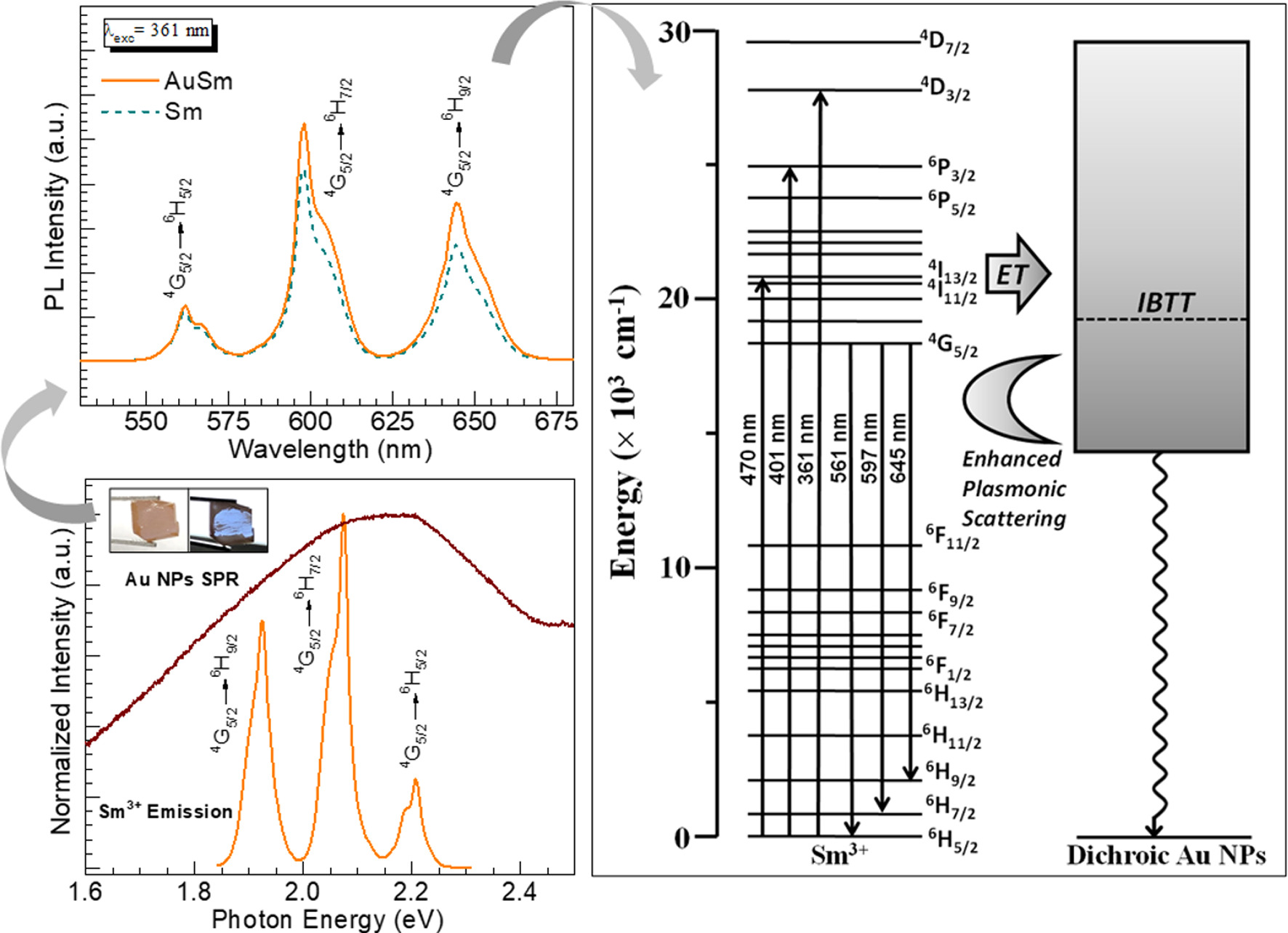https://doi.org/10.1140/epjd/s10053-023-00711-8
Regular Article—Optical Phenomena and Photonics
Photoluminescence of Sm3+ ions in Au-doped plasmonic and dichroic phosphate glass
Department of Chemistry and Biochemistry, Georgia Southern University, 30460, Statesboro, GA, USA
a
jjimenez@georgiasouthern.edu
Received:
2
November
2022
Accepted:
21
June
2023
Published online:
30
June
2023
The influence of plasmonic gold nanoparticles (NPs) on the photoluminescence (PL) of Sm3+ ions in barium-phosphate glass exhibiting dichroism has been investigated emphasizing the dependence on excitation and emission wavelengths. The Au and Sm co-doped glass was prepared by the melt-quenching technique and characterized by X-ray diffraction (XRD), Fourier transform-infrared spectroscopy (FT–IR), optical absorption and PL spectroscopy including decay kinetics analysis. XRD and FT–IR supported the amorphous nature of the glass and the IR-active features characteristic of PO4 tetrahedra in the network, respectively. The extinction spectrum displayed a broad surface plasmon resonance (SPR) band for Au NPs around 575 nm, while the glass exhibited dichroism appearing to transmit blue light while scattering orange-brown. Further, the orange-red emission from the co-existing Sm3+ ions showed an enhancement relative to a merely Sm3+-doped reference. The improved PL varied with the excitation wavelength, being more effective for shorter wavelengths resonant with Sm3+ excitation away from the SPR absorption of gold NPs. The PL enhancement was observed for the Sm3+ 4G5/2 → 6H7/2, 6H9/2 transitions around 597 and 645 nm, respectively. It is suggested that favorable conditions for an enhancement are achieved when an excitation energy transfer from Sm3+ to Au is less effective (e.g., via 5d → 6sp interband transitions), and the visible Sm3+ PL bands can benefit from light scattering by plasmonic gold particles.
Copyright comment Springer Nature or its licensor (e.g. a society or other partner) holds exclusive rights to this article under a publishing agreement with the author(s) or other rightsholder(s); author self-archiving of the accepted manuscript version of this article is solely governed by the terms of such publishing agreement and applicable law.
© The Author(s), under exclusive licence to EDP Sciences, SIF and Springer-Verlag GmbH Germany, part of Springer Nature 2023. Springer Nature or its licensor (e.g. a society or other partner) holds exclusive rights to this article under a publishing agreement with the author(s) or other rightsholder(s); author self-archiving of the accepted manuscript version of this article is solely governed by the terms of such publishing agreement and applicable law.





